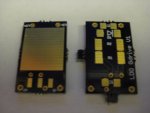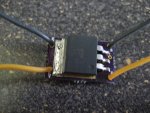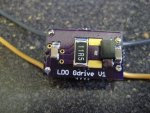- Joined
- Mar 25, 2011
- Messages
- 8
- Points
- 0
Your circuit looks good, the board is harder to tell because I can't see it very well, but also looks OK to me. If it passes the DRC and ERC fine then you should be in the clear.
What's the size of the finished board if you don't mind me asking? Around 11x15mm?
As you said, your power rating will go up to 4w, but the resistance will also become half if you use two matched resistors.
Glad to see that you're using James for your PCB, the place he uses is really good and gets the boards out quickly.
What's the size of the finished board if you don't mind me asking? Around 11x15mm?
As you said, your power rating will go up to 4w, but the resistance will also become half if you use two matched resistors.
Glad to see that you're using James for your PCB, the place he uses is really good and gets the boards out quickly.






